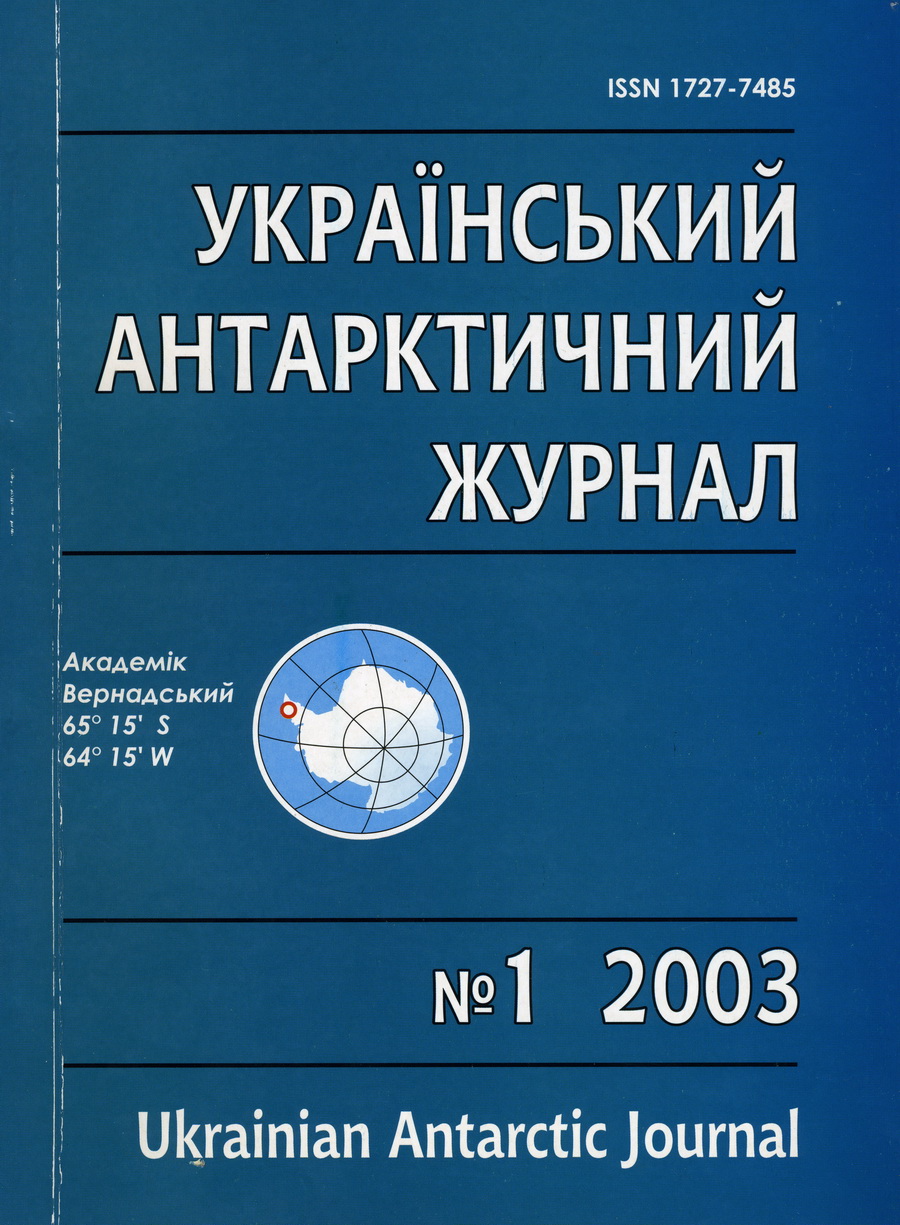Mesoscale and Microphysical Features of Frontal Rainbands in the Deep Depression of Explosive Cyclone Type over the Antarctic Peninsula
- Antarctic Peninsula,
- numerical model,
- frontal rainband,
- cloud microphysics,
- cloud condensation nuclei (CCN)
- ice nuclei (IN) ...More
Abstract
The study is focused on the numerical simulation of frontal rainbands associated with a deep depression of the explosive cyclone type, moved over the Antarctic Peninsula from the South Pacific and caused severe weather and heavy precipitation 01-02.04.98. To study the formation and development of supercooled frontal rainbands, the adaptation of previously worked out numerical models to the specific region with limited initial data both for the simulation and verification of the model outputs has been performed. Outputs of 3-D novacasting limited area model (LAM) based on rawinsonde data of Bellingshausen station are used as initial data for 1-D forecasting microphysical model. A set of equations is used to simulate the evolution of the processes of condensation, nucleation, freezing, sedimentation, accretion, collection, etc. Thermodynamical conditions in the troposphere are continuously updated as the system moved over the initial point in 1-D simulation. Two tracks via the frontal rainbands are studied. The study shows that at the same thermodynamic conditions the liquid phase of the precipitation formed only by coagulation processes less depends on the concentrations, while the solid phase changes dramatically when the concentrations varying, in particular, over the Antarctic Peninsula. The study has pointed extreme values of cloud microphysical empirical parameters and showed that frontal clouds moved from the Pacific to the West Antarctic under
certain conditions can accumulate the huge reserve of precipitable moisture that could result in heavy rain and snowfalls.
References
- Krakovskaia, S.V. (1999). Primenenie trehmernyh chislennyh modelei dlia issledovaniia frontal'nyh polos oblachnosti i osadkov nad Antarkticheskim poluostrovom [Application of 3D numerical models to study frontal swaths of cloudness and precipitation above the Antarctic Peninsula]. Naukovi praci UkrNDGMI, 247, 17-29. (In Russian)
- Krakovskaia, S.V. (2000). Chislennoie modelirovanie atmosfery v issledovanii frontal'nyh polos oblachnosti i osadkov nad Antarkticheskim poluostrovom [Numerical modelling of the atmosphere in research of frontal swaths of cloudiness and precipitation above the Antarctic Peninsula]. Bulleten UAC, 3, 41-53. (In Russian)
- Palamarchuk, L.V., & Pirnach, A.M. (1992). Issledovanie vnutrennei struktury frontal'nyh zon pri pomoschi trehmernyh poluempiricheskih modelei [Studyin the internal structure of frontal zones using 3D half-empirical models]. Tr. UkrNIGMI, 243, 107-124. (In Russian)
- Hegg, D.A., Ferek, R.J., & Hobbs, P.V. (1995). Cloud condensation nuclei over the Arctic Ocean in early spring. J. Appl. Meteor., 4(9), 2076-2082.
- Krakovskaia, S.V., & Pirnach, A.M. (1998). A theoretical study of the microphysical structure of mixed stratiform frontal clouds and their precipitation. Atmos. Res., 47-48, 491-503.
- Krakovskaia, S.V., & Pirnach, A.M. Theoretical study of formation and development of Antarctic cloudiness under different intensity of ice and cloud droplet nucleation. AIP conference proceedings, 534. Melville, NY.
- Locatelli, J.D., Martin, J.E., & Hobbs, P.V. (1995). Development and propagation of precipitation cores on cold fronts. Atmos. Res., 38, 177-206.
- Pirnach, A.M., & Krakovskaia, S.V. (1994). Numerical studies of dynamics and cloud microphysics of the frontal rainbands. Atmos. Res., 33, 333-365.
- Turner, J., Lachlan-Cope, T.A., Thomas, J.P. et al. (1995). The synoptic origins of precipitation over the Antarctic Peninsula. Antarctic Science, 7(3), 327-337.
- Turner, J., & Thomas, J.P. (1994). Summer-season mesoscale cyclones in the Bellingshausen-Weddell region of the Antarctic and links with the synoptic-scale environment. International Journal of Climatology, 1, 871-894.

